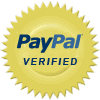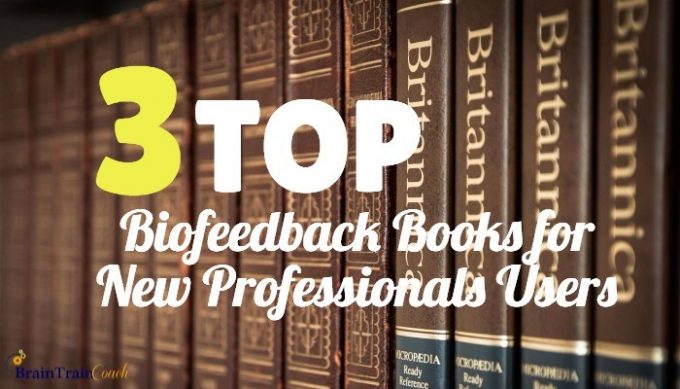Top Biofeedback Books for Professionals
Here are the top 3 on the reading list of Biofeedback books for Professional Therapists, Coaches and Counselors. Simply, they offer the best information in three different frameworks. These books are also recommended by the most influential practitioners and researchers in the Biofeedback Community: they are the ‘gold standard’.
1. The Clinical Handbook of Biofeedback: A Step-by-Step Guide for Training and Practice with Mindfulness April 2013 by Dr. Inna Khazan
You can read a free portion via Amazon Kindle, or buy it here: The Clinical Handbook of Biofeedback (on Amazon)
Why you should read it first:
- Most current of the professional books oriented towards use in practical settings
- Lots of examples of how to use in specific settings
- Best of the best biofeedback experts love this book
- It is available via Amazon in ebook, kindle or hard copy
- Specifically covers methods, techniques and modalities, especially Heart Rate Variability
Here are 2 experts reviews which further prove this as a #1 choice:
Dr.Khazan has done a masterful job of taking the essence of biofeedback protocols and presenting them in a clear, understandable manner. She captures most of the current practice and techniques in applied psychophysiology/biofeedback.— Professor Richard Gevirtz, Distinguished Professor of Psychology, CSPP @ Alliant International University
This masterful book belongs on the desk of every clinician and educator interested in biofeedback. It is the only book that takes biofeedback beyond learning how to attach the sensors to how to do clinical treatment/training. It offers a structured approach to optimize clinical success and is filled with pragmatic clinical instructions and pearls of wisdom which will significantly improve clients’ outcome. It is the much awaited clinical teaching manual that complements our own book, Biofeedback Mastery- An Experiential Teaching and Self-Training Manual.— Professor Erik Peper, San Francisco State University.
Why it is essential:
A practical guide to the clinical use of biofeedback, integrating powerful mindfulness techniques.
- A definitive desk reference for the use of peripheral biofeedback techniques in psychotherapeutic settings, backed by a wealth of clinical research
- Introduces mindfulness and acceptance techniques and shows how these methods can be incorporated into biofeedback practice
- Step-by-step instructions provide everything a clinician needs to integrate biofeedback and mindfulness including protocols, exemplar logs for tracking symptoms, and sample scripts for mindfulness exercises
- Includes scientifically robust treatment protocols for a range of common problems including headaches, hypertension and chronic pain
2. Biofeedback Mastery: An Experiential Teaching and Self-Training by Dr. Erik Peper
You can read more in depth reviews on Amazon or buy it here: Biofeedback Mastery: An Experiential Teaching Manual
This book has been called the “Master Training Manual for Students and Professional users”. As it is a training manual, it is meant to be used in conjunction with biofeedback equipment to thoroughly learn all the techniques.
Simply, Dr. Peper is one of the most respected, long serving biofeedback researcher and proponent. His credentials are impeccable. If he writes it, I know I can trust it.
Here is a little information about him and this book.
Erik Peper, Ph.D. is an international authority on biofeedback and self-regulation.
He is professor at the Institute for Holistic Healing Studies, Department of Health Education at San Francisco State University. He is president of the Biofeedback Foundation of Europe and past president of the Association for Applied Psychophysiology and Biofeedback. He holds senior fellow (biofeedback) certification from the Biofeedback Certification Institute of America. He received the 2004 California Governor s Safety Award for his work on healthy computing. He is an author of numerous scientific articles and books.
Why it is essential:
- An invaluable resource for the novice, as well as as the experienced biofeedback practitioner.
- Among its exemplary features are its highly structured units on biofeedback modalities that facilitate the well-detailed ‘how to’ instructions.
- Students’ feedback consistently states that the manual greatly enhances comprehension and application of psycho-physiological principles.”
— Maureen Haney, MS, Director of the Psychophysiology Lab – California State University, Fullerton (Amazon Review)
Biofeedback Mastery is a superb laboratory manual for training students and staff in all the major biofeedback modalities. Each unit teaches instrumentation and clinical skill fundamentals through intuitive and well-illustrated exercises. This manual is an indispensable resource for educators, students, and clinicians.” Fred Shaffer, PhD, Professor of Psychology– Truman State University (Amazon Review)
3. The Relaxation Response by Dr. Herbert Benson.
You can read more in depth reviews on Amazon or buy it here: The Relaxation Response
This is the book and the man that started the modern day feedback and mindfulness movement in the western health perspective.
Why it is essential:
- It is a quick read sharing a history of important studies in the then nascent meditation, mindfulness and mind/body movement.
- It is available cheap, everywhere.
- It teaches the basics behind the sympathetic and parasympathetic relationships in terms of mind and body harmony.
When Dr. Herbert Benson introduced this simple, effective, mind/body approach to relieve stress in The Relaxation Response twenty-five years ago, the book became an instant national bestseller. Since that time, millions of people have learned the secret of the relaxation response–without high-priced lectures, drugs, or prescription medicine. The tremendous success of this approach has turned The Relaxation Response into the classic reference recommended by most health care professionals and authorities to treat the harmful effects of stress.
This revitalizing, therapeutic approach, discovered by Dr. Benson and his colleagues in the laboratories of Harvard Medical School and its teaching hospitals, is now routinely recommended to treat patients suffering from heart conditions, high blood pressure, chronic pain, insomnia, and many other physical ailments. Requiring only minutes to learn, and just ten to twenty minutes of practice twice a day, the Relaxation Response has proven to be one of the most effective ways to relieve the tensions of modern-day living for a richer, healthier, more productive life.
“When you look at the popularity of mind-body medicine today, it’s hard to understand what a groundbreaking book this was when it was first published in 1975. Based on studies at Boston’s Beth Israel Hospital and Harvard Medical School, Dr. Herbert Benson showed that relaxation techniques such as meditation have immense physical benefits, from lowered blood pressure to a reduction in heart disease. The Relaxation Response demystifies the mantra meditation used in the transcendental meditation program, explaining how anyone can reap its advantages with or without the help of a guru. If you want to understand the beginnings of today’s alternative medicine movement, or if you’re simply looking to learn a simple meditation technique without a lot of metaphysical trappings, this is a good place to start.” — Ben Kallen (Amazon Review)





